The pilgrimage of the holy Relics of St Anthony covers India from 19 February to 20 March this year. This is being held to mark St Padre Pio’s 100 years of stigmata, the 50th anniversary of his death as well as that of the Capuchin presence at St Pio Friary, Navelim.
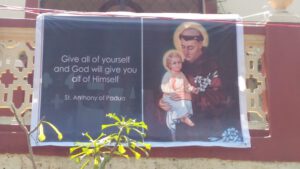
It may be noted that St Anthony, born Fernando Martins de Bulhões (1195-1213), in Lisbon, Portugal, worked and died a Franciscan friar in Padua, Italy. Hence the respective countries know him alternatively as ‘St Anthony of Lisbon’ and ‘St Anthony of Padua’. This is perfectly legitimate for, in the Catholic hagiological tradition, a saint’s place of birth, work and death are equal in importance.
St Anthony was noted for his powerful preaching, expert knowledge of Scripture, and undying love and devotion to the poor and the sick. He was one of the most quickly canonized saints in church history. He is a Doctor of the Church and regarded as patron saint of lost things.
In the year 1525, the religious Order of the Franciscans to which St Anthony belonged had a major offshoot in the Order of Friars Minor Capuchin (Latin: Ordo Fratrum Minorum Capuccinorum; post-nominal abbreviation, O.F.M.Cap.)
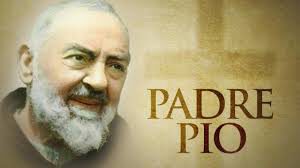
Fast forward to the twentieth century. Francesco Forgione (1887-1968) joined the Order of Friars Minor Capuchin. He assumed the name ‘Pio’ (Pius, in Italian) and later came to be known as Pio of Pietrelcina, his birthplace. A mystic, he eventually became famous for exhibiting stigmata (that is, appearance of bodily wounds, scars and pain in locations corresponding to the crucifixion wounds of Jesus Christ, such as the hands, wrists and feet). He was beatified (in 1999) and canonized (in 2002) by Pope John Paul II. A religious sanctuary takes his name at San Giovanni Rotondo, province of Foggia, Italy.

The present pilgrimage of the relics of the Saint marks an important milestone in the history of the Religious Order. It equally helps keep their use in perspective and promote the faith of the people. As St Jerome wrote in his ‘Letter to Riparius’, “We do not worship, we do not adore, for fear that we should bow down to the creature rather than to the Creator, but we venerate the relics of the martyrs in order the better to adore Him whose martyrs they are.”
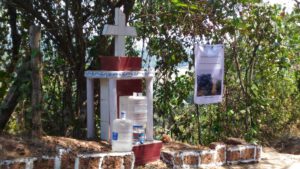
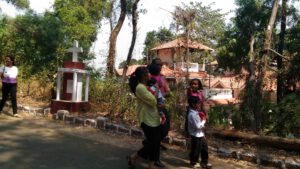
This is something that in our jet age some may find quite strange. But then, don’t we treasure objects that once belonged to a loved one – be it a piece of clothing or even a lock of hair? And don’t museums scout for and showcase items that belonged to the rich and famous – be it a writing pen or a gun or even a bullet that might have killed the person concerned? Similarly, Catholic believers treasure the relics of saints.
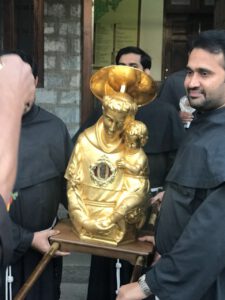 At the church of the Alverno Friary, Monte de Guirim, my family and I were among thousands venerating the fragment of petrified flesh embedded at the heart of a golden reliquary bust of St Anthony. And when a tiny silver reliquary caught our eye, they informed us that it contained the Saint’s smallest rib bone, otherwise designated for veneration only by the sick. Whereupon we kissed the reliquary most reverently.
At the church of the Alverno Friary, Monte de Guirim, my family and I were among thousands venerating the fragment of petrified flesh embedded at the heart of a golden reliquary bust of St Anthony. And when a tiny silver reliquary caught our eye, they informed us that it contained the Saint’s smallest rib bone, otherwise designated for veneration only by the sick. Whereupon we kissed the reliquary most reverently.
The Alverno Friars exhorted pilgrims to pray ardently even as an impromptu procession wended its way to the hilltop. Most people chose to listen to and sing hymns playing on the public address system, as a form of prayer. It took us a good 1½ hours to inch forward to the chapel housing the Relics. These will spend the second half of Saturday and the whole of Sunday, 4 March, at the Navelim friary.
Before we close, here’s a nugget of information: the Friary is named after a similar house of the same Order, situated on Mount Alverno, Ontario. Although education is the main activity of the friars, they are also engaged in preaching the Word of God, spiritual assistance, other pastoral ministry in the chapels and parishes nearby. The friars are also chaplains to several convents in the neighbourhood. The Friars run a social welfare centre each at Guirim and Sangolda.
My family and I loved and felt blessed by the experience of resting our eyes on the Relics of St Anthony!